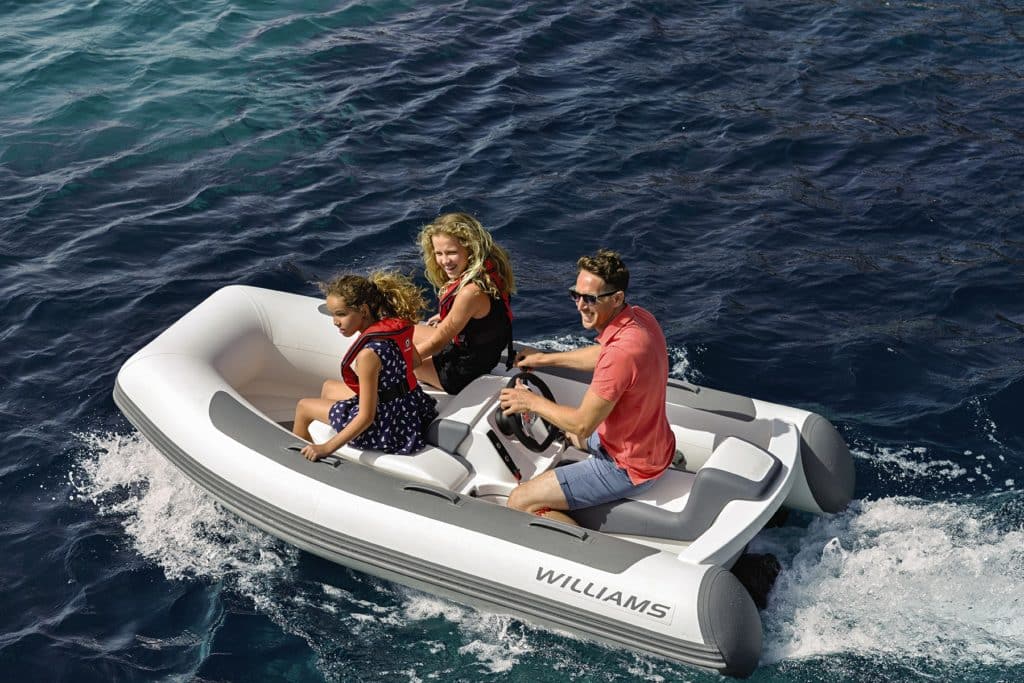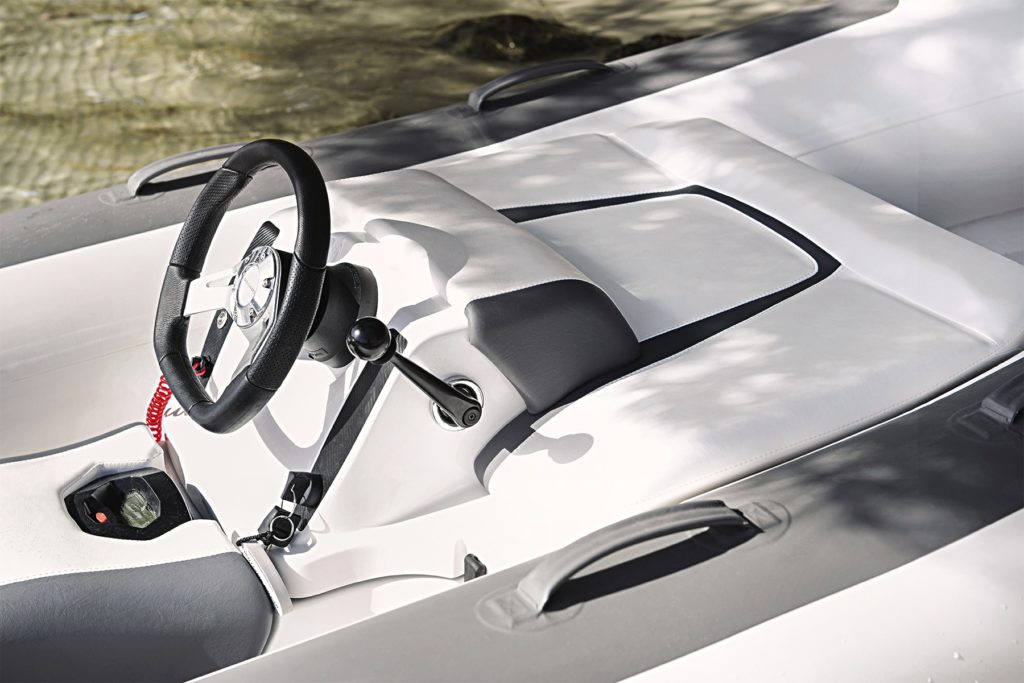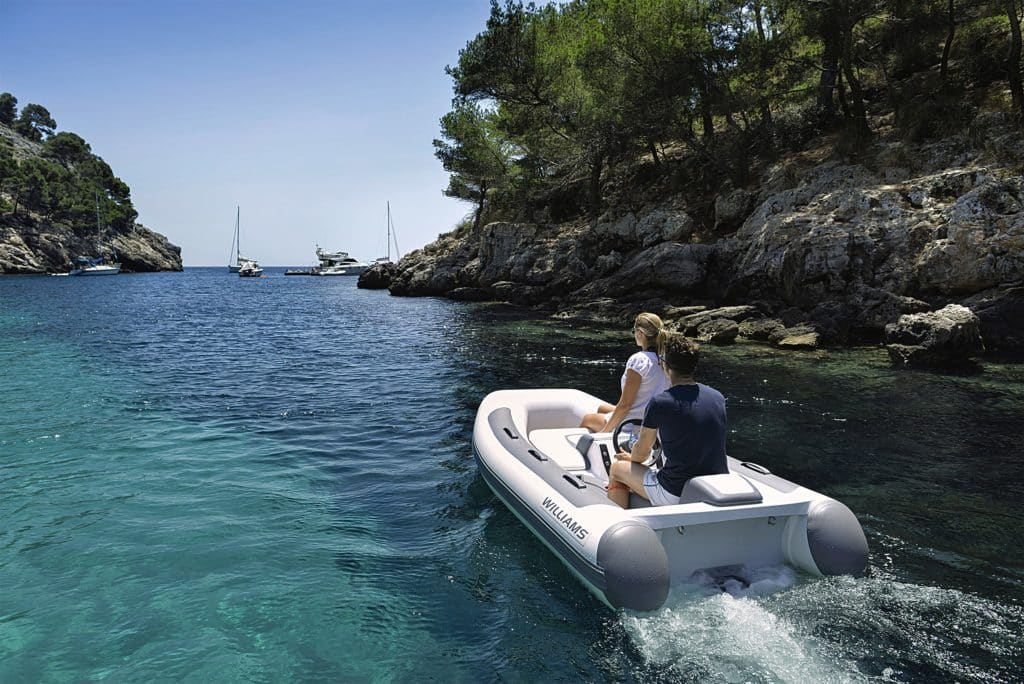
Length, beam and power-to-weight ratios are usually deciding factors on most tender purchases, especially those involving transom garages. Williams Jet Tenders have become a favorite aboard 50-plus-foot yachts thanks to the streamlined design of the jet drive, which doesn’t protrude like an outboard. But for owners of 30- and 40-foot yachts, tenders often have to be towed or done without.
Enter the Williams Minijet, designed for yachts 48 feet and shorter. “We’d been thinking about the Minijet for five years,” says Mathew Hornsby, who founded the U.K. company in 2004 with his brother, John. “When we got exclusivity to the ACE engine, the concept became physically viable.”

BRP Rotax had developed the ACE 900 (Advanced Combustion Efficiency) for Sea-Doo personal watercraft, so the companies produced a catalytic converter and engine software to adapt the engine for use on the Minijet.
The Minijet’s LOA of 9 feet 2 inches lets it fit into tighter yacht garages, while the 45 hp ACE 900 delivers a top end of 31 knots. The tender’s 440-pound weight still requires a retrieval system, which Williams is developing, but the Minijet is about half the weight of the next-largest Williams Turbojet. It carries four people (one a child) and can pull a 160-pound water-skier. “It’s a fun boat for the whole family to drive,” Hornsby says.










